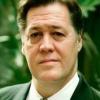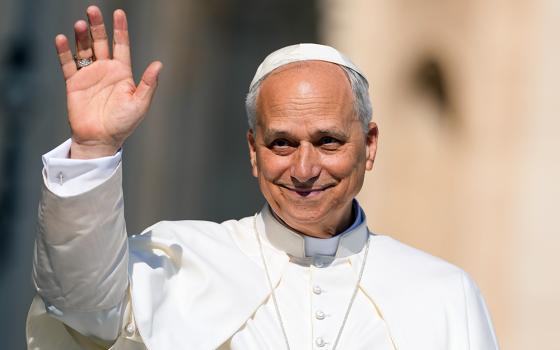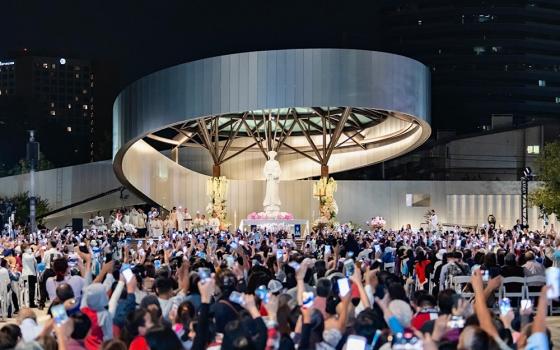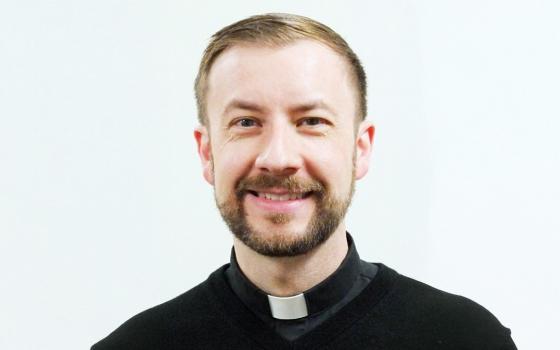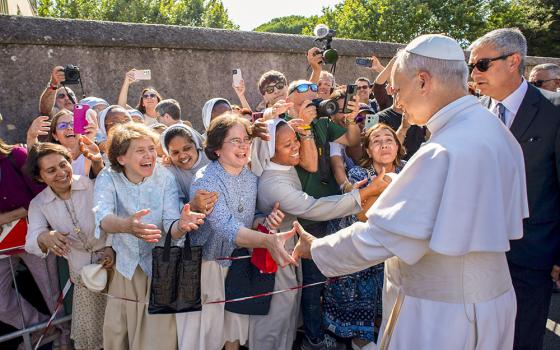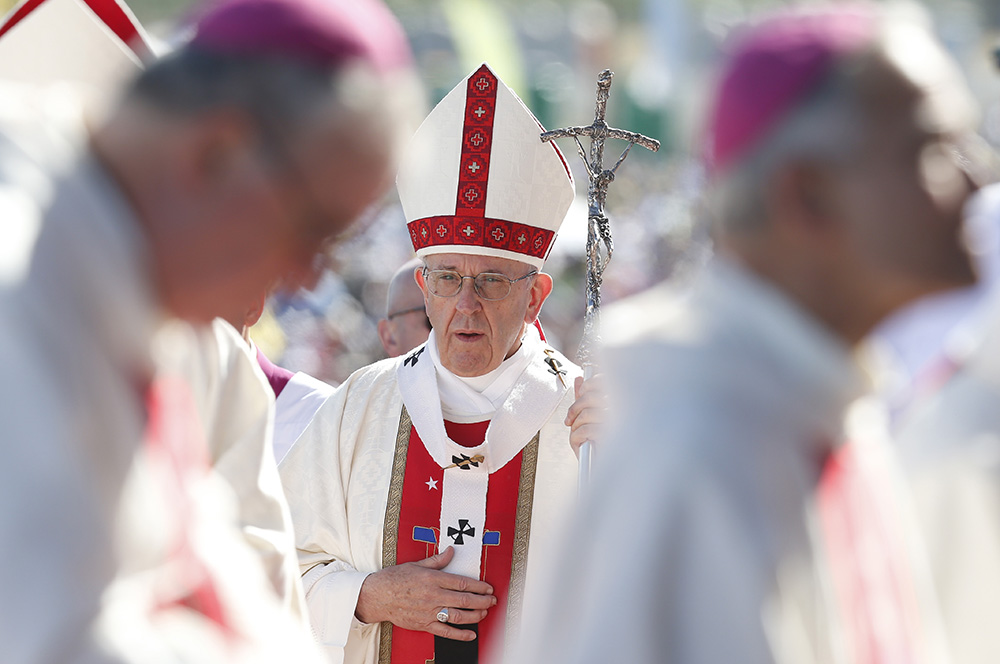
Pope Francis arrives in procession with other bishops during Mass at the Maquehue Airport near Temuco, Chile, Jan. 17, 2018. (CNS/Paul Haring)
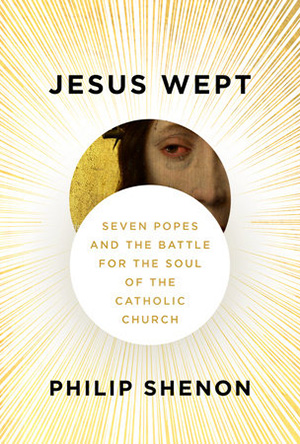
Tragedy and hope vie for thematic supremacy in Philip Shenon's newest book, Jesus Wept: Seven Popes and the Battle for the Soul of the Catholic Church, a highly readable, character-driven narrative following seven convulsive decades within the papacy, Vatican and global church.
Though many of the events documented are already well-known, Shenon — formerly a foreign correspondent and investigative reporter at The New York Times before publishing other notable books — goes deeper into the personalities, flaws and psychodynamics of church officials than most writers attempt.
Still, the book has a striking omission: the influence of Fr. Andrew Greeley, whose long career as a sociologist, essayist and novelist grappled with key events in Shenon's chronicle. Greeley's writing on Pope Paul VI's disastrous 1968 birth control encyclical endorsed the widespread misgivings of lay people. As a pioneering critic of the bishops' pedophilia cover-ups, Greeley also found hope in the sacred imagination in books like The Catholic Myth.
Advertisement
Shenon's sweeping story begins with a benevolent revolutionary, Pope John XXIII, elected pope at 76 in the 1958 conclave. Raised in a sharecropping family of 13 children, Angelo Roncalli rose through seminary and higher studies to become a Vatican diplomat.
"At a time when Pius XII was silent about the Holocaust, [reporters] discovered, then Archbishop-Roncalli acted to save Jews, often to the exasperation of superiors in Rome," writes Shenon. Elected by cardinals who assumed his age would make him a safe caretaker, John XXIII made historic overtures to Jews and stunned the Roman Curia by calling the Second Vatican Council, putting the church on a course for reform yet to be fulfilled.
Shenon follows the successors of "good Pope John" with an incisive eye on their failures to embrace his vision. Paul VI's papacy saw fault lines in Curial officials, steeped in antisemitism which worried the forward-thinking French theologian and Dominican priest Yves Congar, while American bishops took solace in an immigrant church of Irish, Italian and Polish believers rising to the middle class by 1960 with the election of a Catholic president, John F. Kennedy. "How can we establish diplomatic relations with the people who killed Jesus?" a major Italian cardinal brooded amid these changes, regarding the state of Israel.
Shenon portrays Paul VI (since canonized) as widely read, hardworking and riven by insecurities. The liberal Belgian cardinal Leo Suenens, a confidante, wrote that Paul "was wracked with self-pity, at one point pleading: 'Yes pray for me; because of my weaknesses, the church is badly governed.' "
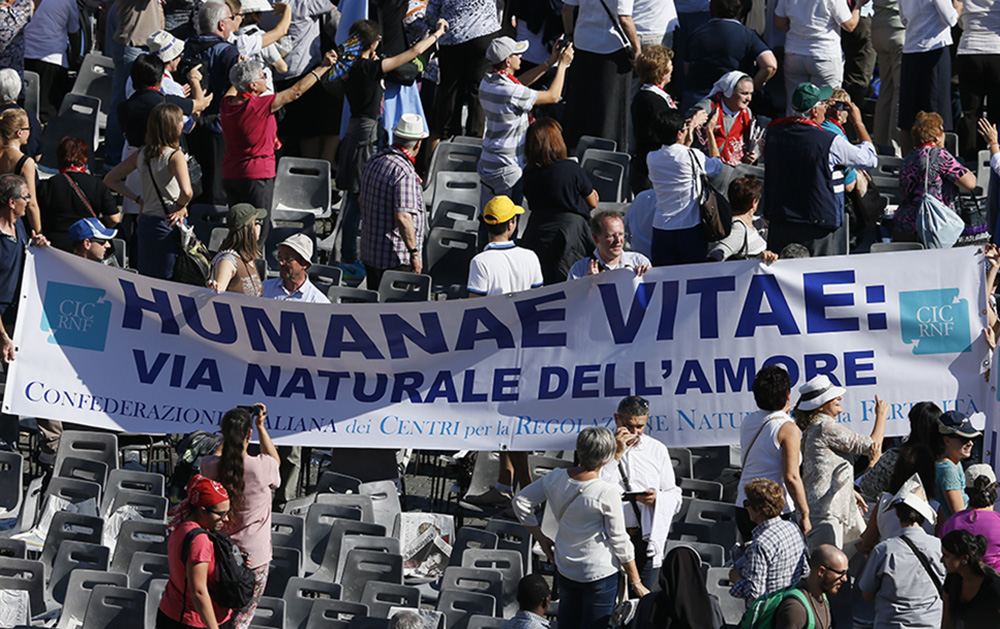
A banner referencing "Humanae Vitae," the 1968 encyclical of Blessed Paul VI, is seen in the crowd at the conclusion of the beatification Mass of Blessed Paul celebrated by Pope Francis in St. Peter's Square at the Vatican Oct. 19, 2014. (CNS/Paul Haring)
Cardinal Alfredo Ottaviani, leader of the Holy Office (today Dicastery for the Doctrine of the Faith) fought fiercely to uphold church opposition to contraception, pushing Paul to ignore a 68-member commission empaneled by John XXIII that supported the birth control pill 64-4.
The 1968 encyclical Humanae Vitae banning artificial contraception was so widely rejected by lay people, theologians and even some bishops that Paul sank into self-doubt. Greeley, as a sociologist reporting why people rebelled, was beyond Rome's punitive reach. Not so theologians like Fr. Charles Curran of Catholic University of America, who lost his teaching license in 1986 on orders of Cardinal Joseph Ratzinger, Ottaviani's heir.
Shenon probes divisions roiling the German church through well-textured profiles of the theologians, Ratzinger and Hans Küng, reform advisers to bishops at Vatican II; their friendship eroded after Ratzinger, incensed by student demonstrators, made a hard shift to the right. The handsome, charismatic Küng's bestselling books questioning papal infallibility and control over theologians led to his punishment, akin to Curran's, under Ratzinger as cardinal.
Shenon is unsparing in his portrait of Ratzinger as myopic and vengeful; the author treats the clergy sex abuse crisis as a counternarrative to Rome's retrenchment on Vatican II reform under John Paul II and Benedict XVI. John Paul's crackdown on liberation theology baffled Latin American bishops who had embraced the "preferential option for the poor," first propounded by the Jesuit director general, Pedro Arrupe, whose portrait by Shenon glimmers with hope.
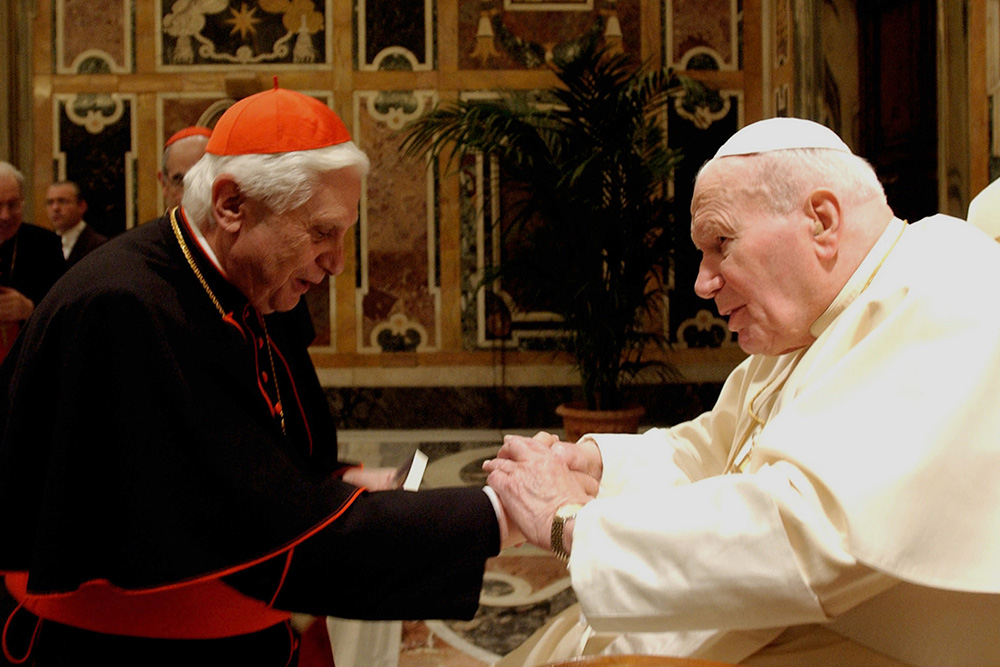
Cardinal Joseph Ratzinger, who later became Pope Benedict XVI, greets St. John Paul II during a 2004 ceremony at the Vatican. In 1981, St. John Paul named Cardinal Ratzinger head of the Congregation for the Doctrine of the Faith. (CNS file)
Shenon adds an intriguing twist to John Paul's myopia, equating Soviet Communism with the Christian base communities of clerics, sisters and theologians living with the poor, encouraging social justice.
"Vernon Walters, a former CIA official who was a roving ambassador for [Ronald] Reagan, [would] meet regularly with John Paul for help in trying to stem leftist church movements in Latin America," writes Shenon. "Declassified CIA records released decades later suggested, but did not prove, that the pope encouraged the CIA's efforts to funnel millions of dollars into Poland in support of Solidarity."
Why John Paul never embraced Archbishop Óscar Romero of San Salvador, who after warning the pope of death squads, was shot dead while saying Mass, may stem from the pope's naïve misreading of CIA "intelligence" as Reagan poured money into El Salvador's corrupt regimes with death squads killing priests, nuns and innocent villagers.
Shenon's portrait of Pope Francis is complicated, like the man. In assessing the Jesuit provincial, Jorge Bergoglio's struggle in Argentina's dirty war (1976-83), Shenon dwells on the young priest's failure to protect two leftist Jesuits from a fascist regime that killed or disappeared 30,000 people. The priests he implored to leave their shantytown parishes were kidnapped, tortured and finally freed. One of the Jesuits eventually celebrated Mass with Bergoglio, the other blamed him.
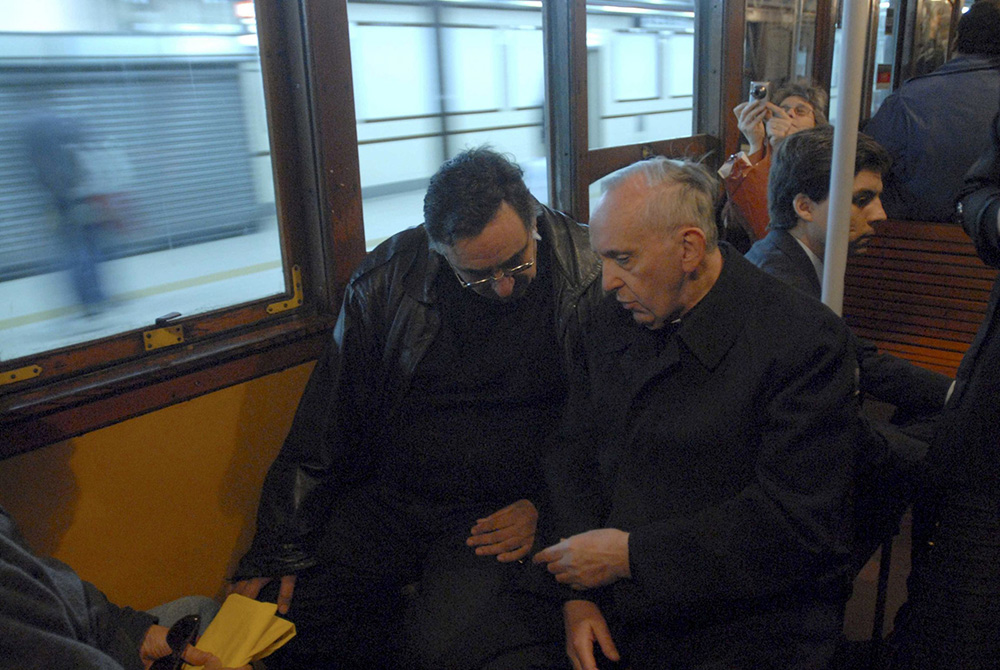
Argentine Cardinal Jorge Mario Bergoglio, right, who later became Pope Francis, is pictured traveling by subway in Buenos Aires in 2008. (CNS/Diego Fernandez Otero, Clarin handout via Reuters)
Horacio Verbitsky, a left-wing Argentine journalist, treated Bergoglio as an accomplice, a position Austen Ivereigh rebuts in The Great Reformer (2014). Shenon's interviews in Argentina with priests critical of Bergoglio as an arrogant leader suggest that he failed to act forcefully, despite several people he helped. This is complex terrain. A book Shenon does not cite, Bergoglio's List (2013) by the Italian journalist Nello Scavo details how Bergoglio risked his life helping numerous people hunted by the regime to escape to other countries.
Shenon is stronger in his sections on Bergoglio's flagrant failures in responding to pedophile priests, a negligence in Argentina (well documented by BishopAccountability.org) that trailed him into the papacy.
Francis' refusal to believe accounts of a complicit bishop in Chile lit a fuse that exploded when the pope traveled there in 2015, facing hostile crowds several times. Reversing course, he sent a Vatican investigator, the canon lawyer, Archbishop Charles Scicluna to investigate, and eventually removed a third of Chile's bishops. The pope also invited three survivors of a notorious predator priest in Santiago to spend time with him at Santa Marta residence in the Vatican.
Shenon writes:
The trio said they were moved by the pope's apologies during hours of wrenching conversations. "I have never met someone more contrite," said Juan Carlos Cruz, one of the three. "The pope said, 'I was part of the problem. I caused this.' " When the three Chileans returned home, they released a statement thanking Pope Francis.
Digging deeper, Shenon points to a recurring pattern as Francis downplays accusations against priests or bishops he likes who crash in scandal, or into prison.
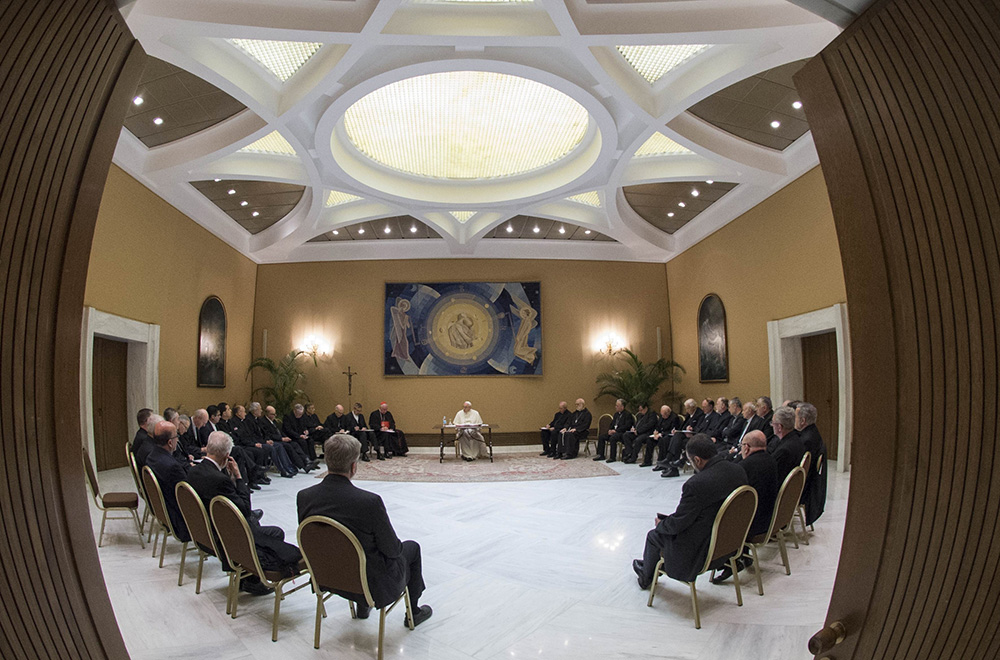
Pope Francis and 34 Chilean bishops are pictured meeting at the Vatican May 15, 2018, to discuss the clerical sexual abuse crisis in Chile. (CNS/Vatican Media)
Early in his papacy, Francis drew cheers from liberal Catholics for denouncing "clericalism" in the Roman Curia, a term popularized by Tom Doyle, the former Dominican canon lawyer and crusader for survivors. The same clericalism, of priests and hierarchs concealing crimes for the sake of power, surrounds this pope as he rightly denounces a culture he has struggled to escape, exposing his vulnerability in wanting to believe in clerics he liked.
Shenon takes note as well of how Francis, unlike any pope in history, had become a moving target of the Catholic ultraright. Despite his flaws, Francis' agenda of radical mercy espousing the rights of the poor and sexually marginalized, raising a cry of sanity in response to climate change, and his synodal path project, bringing the disparate pieces of Catholicism into attempts at dialogue, advanced the Vatican II vision of John XXIII.
The Roman Catholic Church is indeed "like a battlefield," as Francis said, and is split into warring schismatic camps, as Massimo Faggioli has written in The Tablet. Francis was in his final months as Jesus Wept was published. Now, a beleaguered church has Opus Dei operatives with perspiring palms assist Donald Trump in waging war on the poor. Would they recognize Jesus if he wept in their boardrooms?
